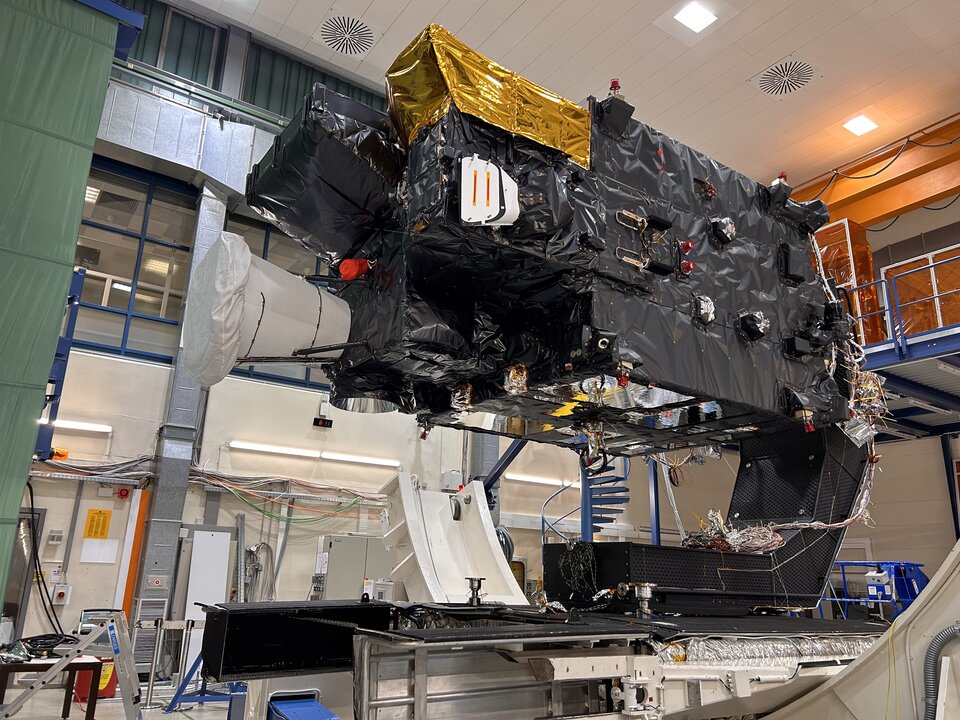As climate change drives more frequent and severe weather events, the need for accurate and timely forecasting has never been more critical. And now, the next Meteosat Third Generation weather satellite has passed its environmental test campaign with flying colours, taking it a significant step closer to launch.
This new generation of satellites is set to transform weather forecasting, particularly in Europe.
Following the spectacular launch of the first MTG-Imager satellite in 2022, which marked the debut of this advanced family of six satellites, all eyes are now on the first MTG-Sounder (MTG-S1) satellite.
While the MTG-Imager significantly improves imaging capabilities over its Second Generation Meteosat predecessor, the MTG-S1 satellite will introduce a groundbreaking infrared sounding capability, enhancing weather prediction accuracy even further.
In addition, it also carries the Copernicus Sentinel-4 instrument to monitor air pollution.

With liftoff slated for next year, the satellite has endured more than seven months of rigorous testing at IABG’s facilities near Munich in Germany to ensure that it can withstand the launch and the harsh environment being 36,000 km above Earth’s equator, from where it will operate for at least 10 years.
Unlike the classical ‘shake & bake’ approach, the MTG-S1 environmental test campaign followed a ‘bake & shake’ sequence.
This means that the satellite was first subjected to a thermal vacuum test, which entails the whole satellite being placed in a huge vacuum chamber for three weeks and exposed to extreme temperatures, ranging from –180˚C to +250˚C.
After emerging unscathed, the satellite faced the ‘shake’ part of the campaign. This included a vibration test on an enormous shaker to simulate the juddering of launch, followed by an acoustic test where it was exposed to more than 140 dB, mimicking the noise of rocket ignition and engine burns.
The satellite was in ‘launch configuration’ for both of these tests, meaning that its deployable parts, like its solar arrays and antennas, were folded up. It was also loaded with harmless fluid, as opposed to real propellants, to match its launch weight.
Naturally, engineers seized the opportunity to verify the satellite’s actual mass properties, including its weight and centre of mass. The predictions proved accurate, with the weight coming in at just over 3.8 tonnes as anticipated.